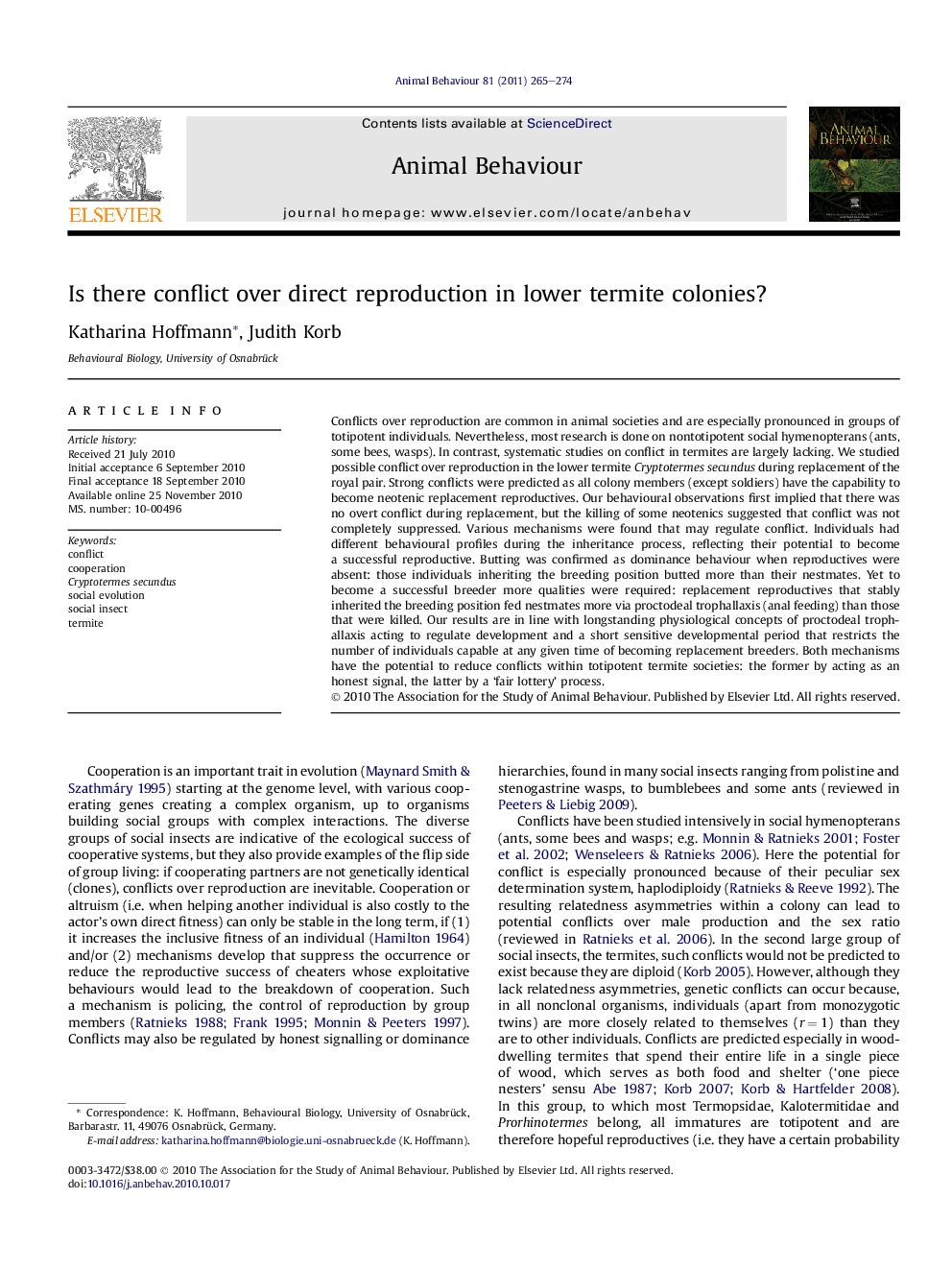| Article ID | Journal | Published Year | Pages | File Type |
|---|---|---|---|---|
| 10971055 | Animal Behaviour | 2011 | 10 Pages |
Abstract
Conflicts over reproduction are common in animal societies and are especially pronounced in groups of totipotent individuals. Nevertheless, most research is done on nontotipotent social hymenopterans (ants, some bees, wasps). In contrast, systematic studies on conflict in termites are largely lacking. We studied possible conflict over reproduction in the lower termite Cryptotermes secundus during replacement of the royal pair. Strong conflicts were predicted as all colony members (except soldiers) have the capability to become neotenic replacement reproductives. Our behavioural observations first implied that there was no overt conflict during replacement, but the killing of some neotenics suggested that conflict was not completely suppressed. Various mechanisms were found that may regulate conflict. Individuals had different behavioural profiles during the inheritance process, reflecting their potential to become a successful reproductive. Butting was confirmed as dominance behaviour when reproductives were absent: those individuals inheriting the breeding position butted more than their nestmates. Yet to become a successful breeder more qualities were required: replacement reproductives that stably inherited the breeding position fed nestmates more via proctodeal trophallaxis (anal feeding) than those that were killed. Our results are in line with longstanding physiological concepts of proctodeal trophallaxis acting to regulate development and a short sensitive developmental period that restricts the number of individuals capable at any given time of becoming replacement breeders. Both mechanisms have the potential to reduce conflicts within totipotent termite societies: the former by acting as an honest signal, the latter by a 'fair lottery' process.
Related Topics
Life Sciences
Agricultural and Biological Sciences
Animal Science and Zoology
Authors
Katharina Hoffmann, Judith Korb,
